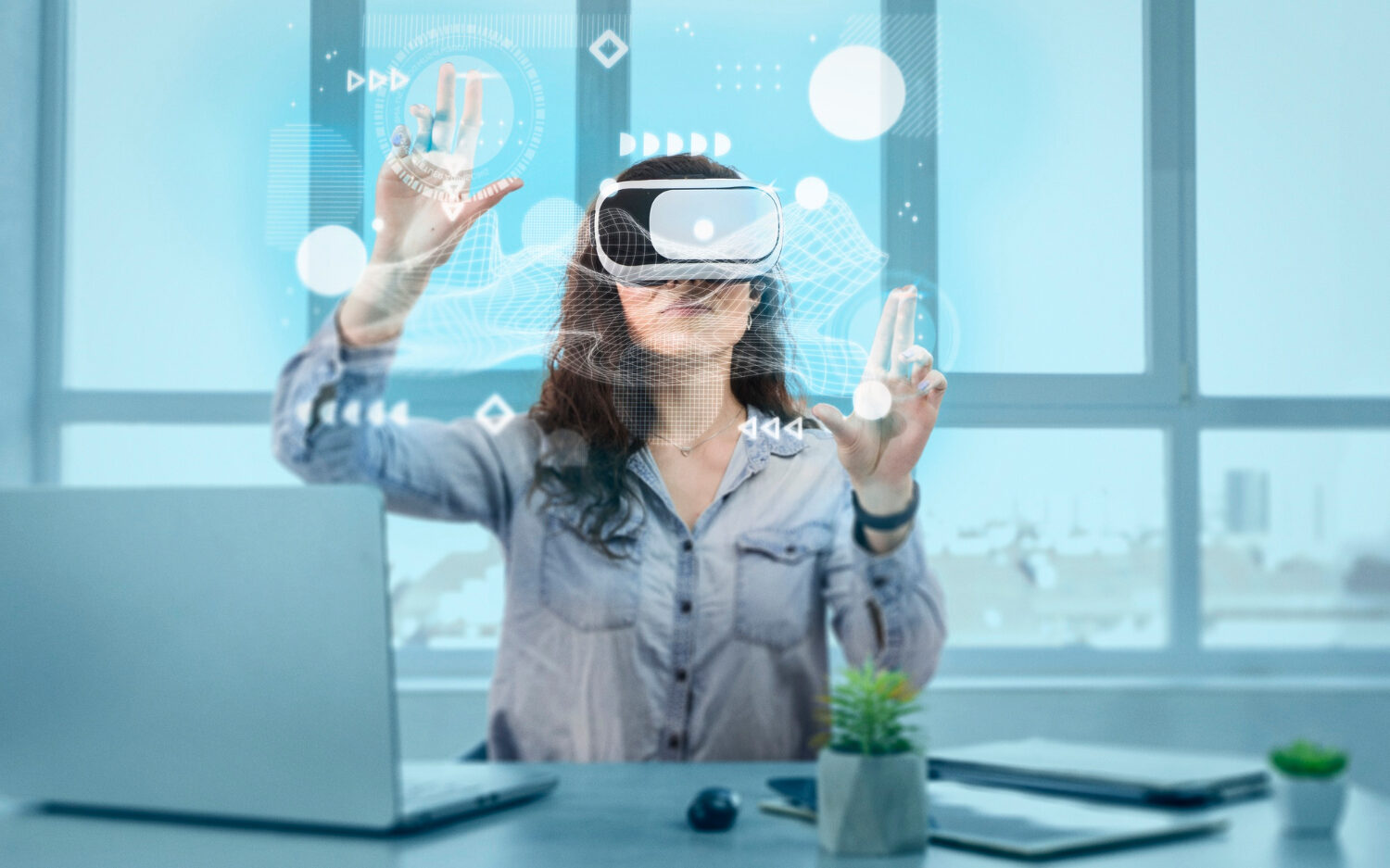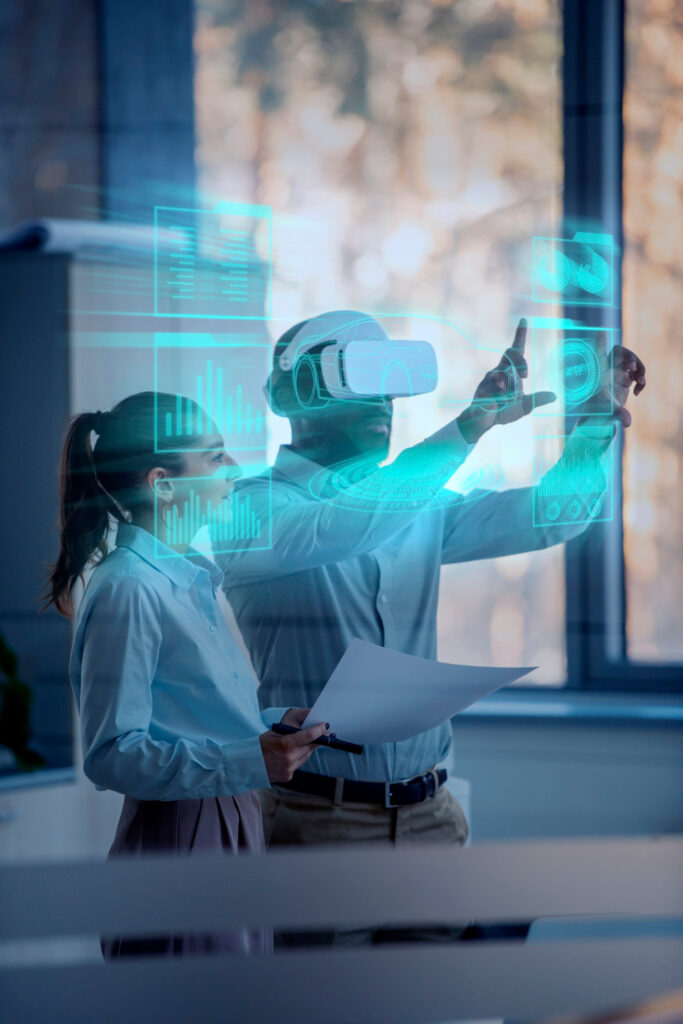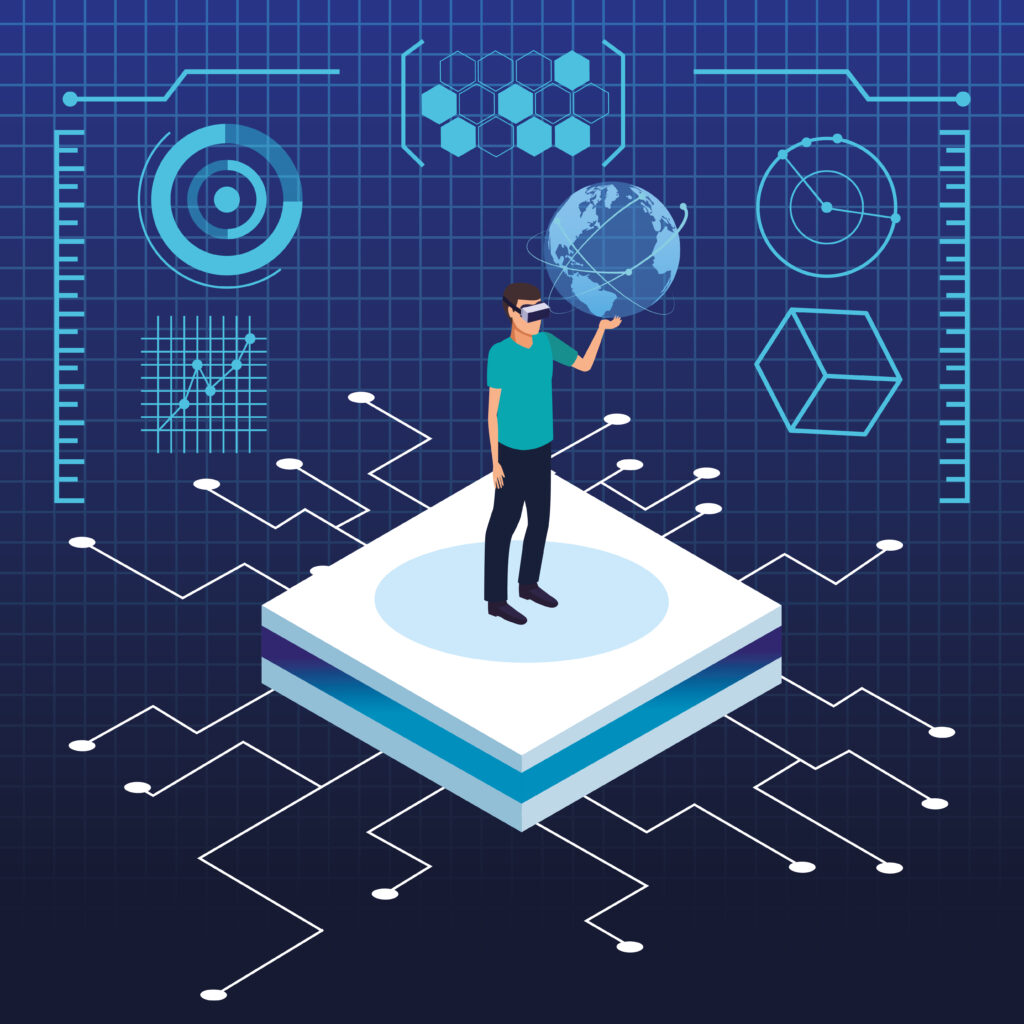M+E Connections

M&E Journal: Transforming the Future of Work
Story Highlights
Over the past few decades, technology has revolutionized the way we live and work. The industrial revolution saw the rise of factories and assembly lines, which significantly increased productivity and output.
The use of machines and automated processes made it possible to produce goods at a much faster pace and with greater precision, leading to mass production and lower costs.
As technology has evolved, so has automation. Robots and other advanced machinery have been developed to perform tasks that were once too dangerous, tedious, or complex for humans.
This has resulted in significant improvements in workplace safety and efficiency, as well as lower costs for businesses.
Artificial intelligence (AI) is a rapidly evolving technology that enables machines to learn from data and make decisions based on that information.
 AI has come a long way through its conceptual inception, when pioneers like Alan Turing first envisioned creating machines that could perform tasks requiring human intelligence, and then in the 1950s, when early efforts to implement the idea were made.
AI has come a long way through its conceptual inception, when pioneers like Alan Turing first envisioned creating machines that could perform tasks requiring human intelligence, and then in the 1950s, when early efforts to implement the idea were made.
However, progress was slow due to limited computing power and data availability.
In recent decades, significant breakthroughs in AI have been made possible by advances in computing power and the availability of vast amounts of data.
There are a few AI projects well-known to the public. One of the most notable examples of AI’s capabilities was IBM’s Deep Blue, which defeated the world chess champion in 1997. Since then, AI has achieved many other groundbreaking achievements, such as Watson, IBM’s natural language processing AI, and Google’s AlphaGo, which defeated a human champion in the ancient Chinese board game of Go.
Currently, the prevailing impression about AI is that it can perform some tasks remarkably well.
This is exemplified by the widespread use of OpenAI’s ChatGPT, a large language model that operates through a chat interface.
AI opens new possibilities for automation in all industries, including the M&E industry. In some areas of M&E, AI has already been used to make work more efficient. One of the most notable examples is content localization.
Since 2018, a few pioneering localization companies have started using AI that can translate con- tent with a 60 percent-plus accuracy.
The development of AI, accumulation of curated data, and augmented workflows to incorporate AI have enabled a 80-90% accuracy in translation before post editing.
Now, major localization companies work under an increased workload with tighter delivery requirements. AI is now able to further accelerate the workflow through multi-modality, context-awareness, and personalization.
More study is needed to determine how local language models (LLMs) will further impact localization for media and entertainment and the accuracy of translations.
On top of translation, there are also other technologies being developed for content localization, such as automated consistency checking and automated quality control, which we’ve recently been asked by our customers to develop. Automated Q&A systems are being developed to assist localization professionals in recalling and comprehending the content they are translating by using AI to answer any questions about the content.
Furthermore, the emergence of AI-powered synthesized voice technologies has led to cost reductions and increased accessibility when used for audio description.
While advances are still needed to create voice inflection and emotion, the technology continues to advance at a rapid speed with natural-sounding voices already available.
Apart from localization, AI can also be used to automate many other tasks in the M&E industry, from content creation to distribution and marketing.
For example, AI can be used to generate personalized content recommendations based on user data, or to create customized advertisements that target specific audiences. Post-production is another area where AI has been actively adopted.
Super-resolution (upscaling a video’s resolution), automatic color grading (adjusting color palette for mood or coherency), censorship and redacting (preventing inappropriate content), and rotoscoping (image tracing) are just a few examples of automation that we can expect to see more of soon.
Although, currently, a significant part of content production is still manual, there have been recent efforts to fully automate content generation.
There have also been recent efforts made to generate synopses and storyboards based on a few keywords as well as generating short movie clips based on a given synopses.
In 5-10 years, we should expect to see more content automatically generated by AI than manually by humans, including movies, TV series, and audiobooks.
Capabilities once thought exclusive to human creation are changing rapidly. To thrive in the future of M&E, the time to embrace AI-driven automation is now.
 As we move toward a future where AI is more prevalent in the M&E industry, there are concerns that creativity will be lost. However, AI can be used to enhance creativity rather than stifle it.
As we move toward a future where AI is more prevalent in the M&E industry, there are concerns that creativity will be lost. However, AI can be used to enhance creativity rather than stifle it.
AI can help content creators with ideation, research, and audience analysis, allowing them to create more engaging content.
In the future, we can expect AI to be used to create content that is customized for specific audiences, making it more personal and engaging. AI is not without its challenges. One of the biggest challenges is the need for curated data. Without enough quality data, AI cannot learn and improve.
LLMs writes and translates at a higher level of complexity. Still, more study is needed to determine its accuracy, capabilities around context awareness, and scalability for media content.
In conclusion, the adoption of AI in the M&E industry is inevitable. While some jobs may disappear, humans are adaptive, and technology is never perfect. AI can bring efficiency and scalability, allowing for the creation of more engaging content.
As more high-quality data is curated, especially across new language pairs, engines will continue to improve in their accuracy and be applied to more M&E use cases.
The future of the M&E industry is bright, and AI-based automation will be a key part of it.
As AI continues to advance, we can expect to see more automation and new possibilities in content creation, localization, distribution, and marketing.
Embracing AI-driven automation will be crucial for businesses to stay competitive in the industry.
While there are concerns about job displacement and loss of creativity, AI can also enhance human creativity and help content creators to produce more engaging and personalized content, thereby increasing capacity, workflow, and output.
With careful planning and implementation, AI has the potential to transform the M&E industry for the better.
* By Tim YH Jung, CEO, XL8 *
=============================================
Click here to download the complete .PDF version of this article
Click here to download the entire Winter 2022 M&E Journal









